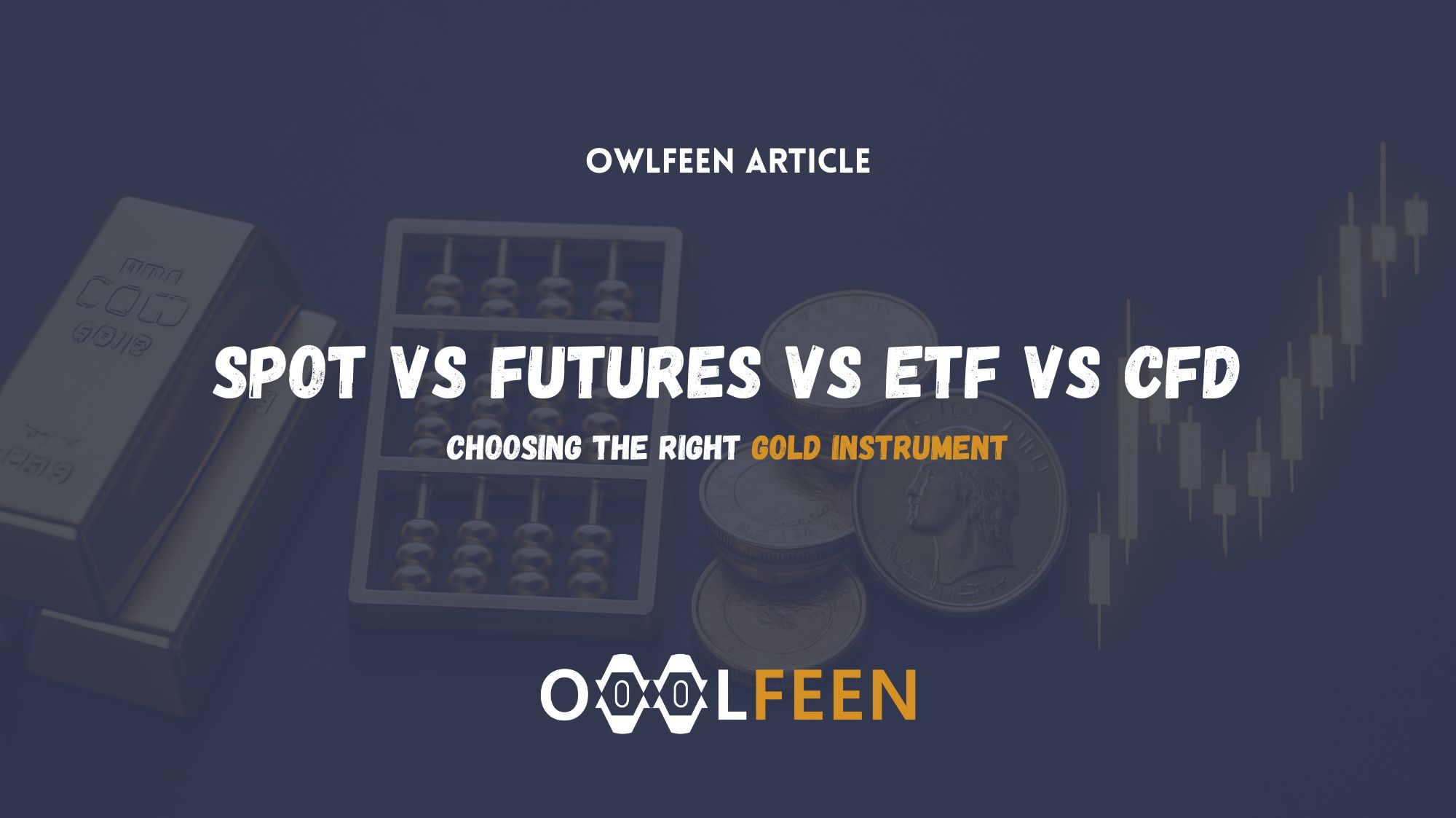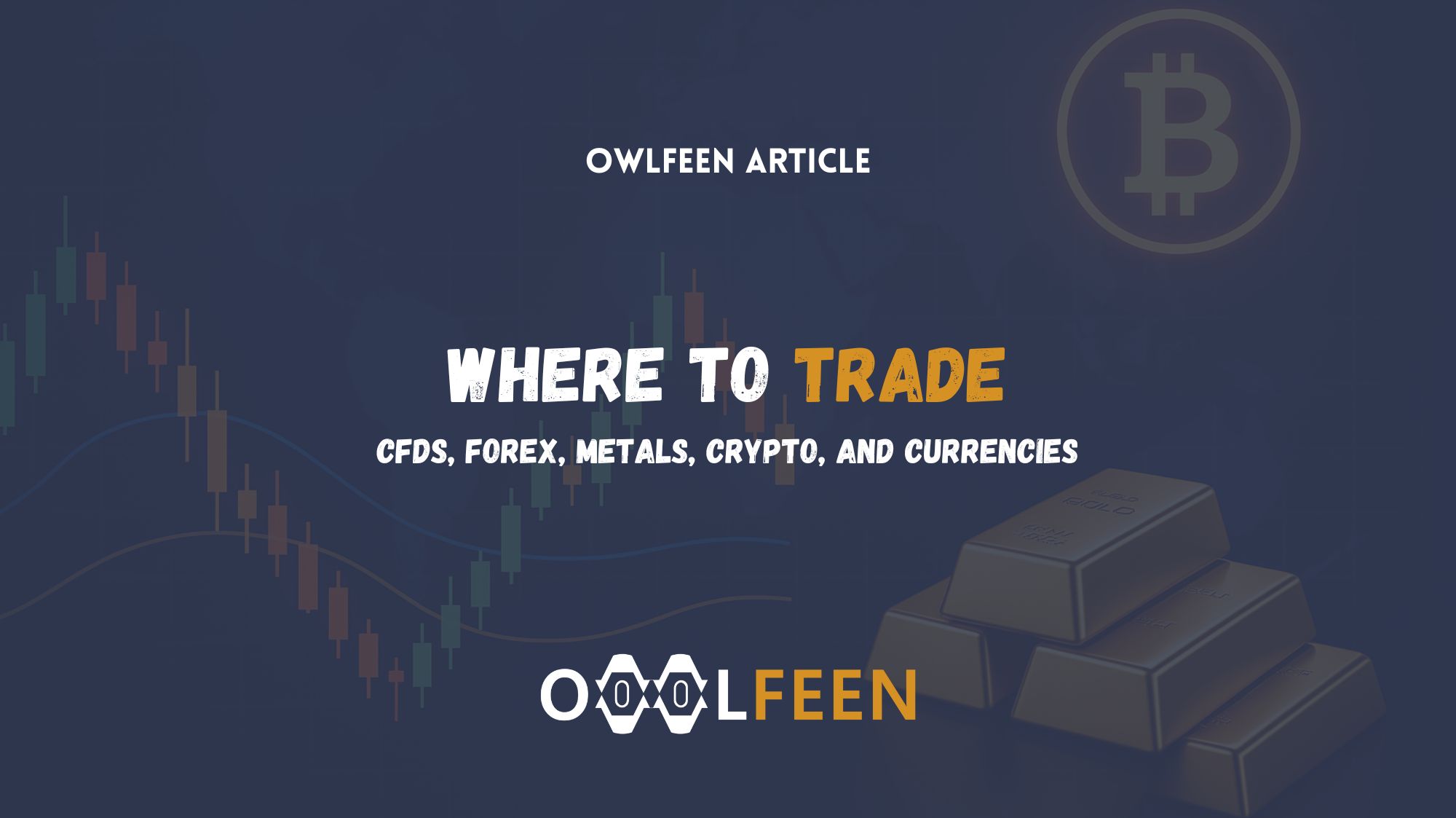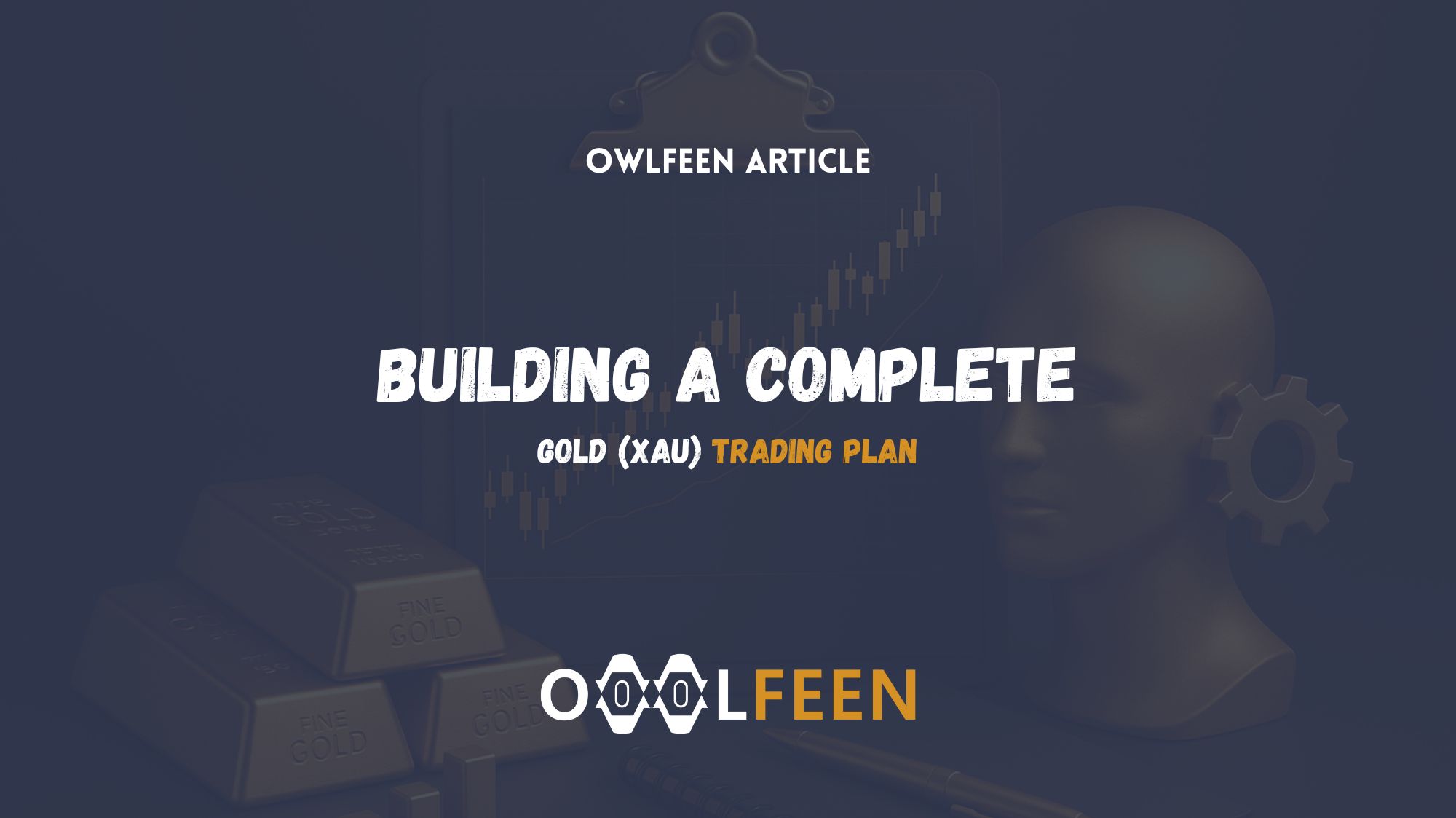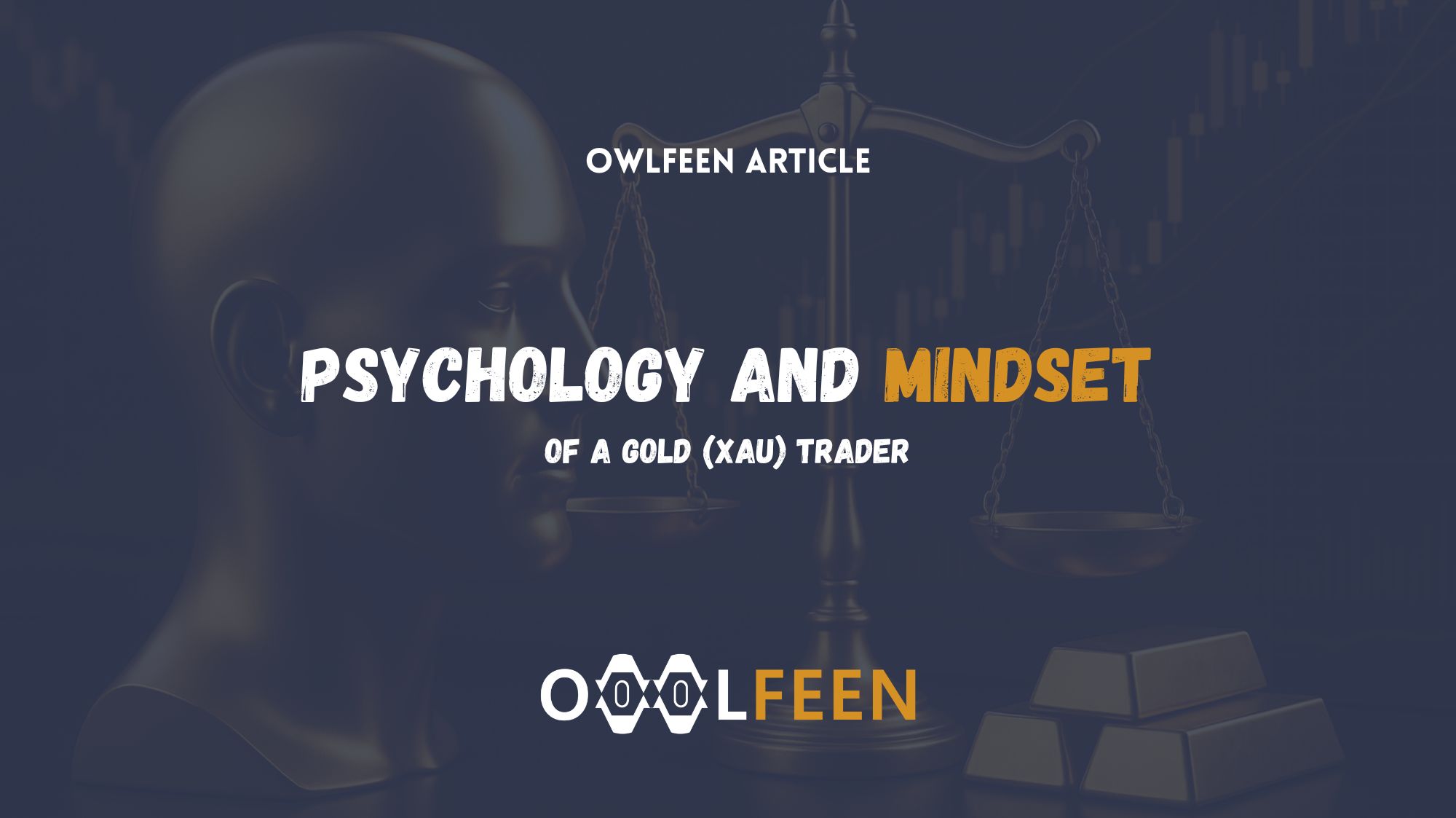Spot vs Futures vs ETF vs CFD: Choosing the Right Gold Instrument
After understanding what XAU is and how the gold market functions, the next step for every trader is to choose the right instrument to trade. Gold can be accessed in several different ways, each with its own structure, cost, and risk profile. The most common forms are Spot Gold, Gold Futures, Gold ETFs, and Gold CFDs.
Selecting the right one depends on your goals, capital, risk tolerance, and trading style. This guide explains how each instrument works, how they differ, and which is most suitable for different types of traders.
Spot Gold
What it is
Spot gold represents the live price of gold traded in the global over-the-counter market. It reflects the current market value for immediate settlement and is quoted as XAU/USD. When you trade spot gold, you speculate directly on its price movement without owning physical gold.
How it works
Spot gold trading is the most popular method for retail and institutional traders alike. Brokers offer it through electronic platforms, allowing you to buy or sell instantly. The price comes from the interbank market and is influenced by global supply, demand, and macroeconomic conditions.
Advantages
-
Instant execution with tight spreads
-
24-hour liquidity across global sessions
-
No expiration date or contract rollover
-
Suitable for both short-term and long-term trading
Disadvantages
-
Requires leverage to amplify returns
-
Overnight swap or rollover fees apply if positions stay open
-
No physical ownership of gold
Best for
Spot trading is ideal for traders who prefer short-term speculation or daily trading on XAU/USD and want direct exposure to the live price without complex contracts.
Gold Futures
What it is
Gold futures are standardized contracts traded on regulated exchanges such as COMEX. Each futures contract represents an agreement to buy or sell a specific quantity of gold (usually 100 troy ounces) at a predetermined price on a future date.
How it works
Futures traders speculate on price changes by buying or selling contracts. They can close positions before expiry, but some large institutions use futures for hedging against currency or inflation risks. Futures require a margin deposit, and profit or loss is settled daily through a process called “mark-to-market.”
Advantages
-
High transparency and strict regulation
-
Deep liquidity and institutional participation
-
No broker-specific pricing manipulation
-
Suitable for both hedging and speculation
Disadvantages
-
Large contract size requires higher capital
-
Margin calls can occur quickly with volatility
-
Expiry dates force traders to roll over positions
-
Complex pricing affected by interest and storage costs
Best for
Gold futures are suited for professional or institutional traders with larger accounts who need regulated exchange exposure or want to hedge large positions.
Gold ETFs
What it is
A Gold ETF (Exchange-Traded Fund) is a financial product that tracks the price of gold and trades on stock exchanges. The most popular example is SPDR Gold Shares (GLD), where each share represents fractional ownership of physical gold stored in vaults.
How it works
Investors buy ETF shares through brokerage accounts just like regular stocks. The ETF’s value changes in line with the gold spot price. It offers exposure to gold’s performance without managing physical storage or trading futures contracts.
Advantages
-
Easy to buy and sell through any stockbroker
-
Backed by physical gold held in secure vaults
-
Low management fees compared to storage costs
-
Suitable for long-term investors or portfolio diversification
Disadvantages
-
No leverage or short-term trading flexibility
-
Small tracking differences between ETF price and spot price
-
Management fees slightly reduce annual returns
Best for
Gold ETFs are perfect for investors seeking long-term exposure to gold as part of a diversified portfolio, rather than active traders looking for leverage or daily speculation.
Gold CFDs
What it is
A Contract for Difference (CFD) allows traders to speculate on the price movement of gold without owning it. CFDs mirror the underlying spot price, and you can trade both directions – buying when you expect gold to rise or selling when you expect it to fall.
How it works
When you open a CFD position, you agree to exchange the difference between the opening and closing prices. Leverage allows you to control a large position with smaller capital. If the market moves in your favor, you profit; if it moves against you, losses are magnified.
Advantages
-
Access to leverage with flexible lot sizes
-
Ability to trade both long and short positions
-
No fixed expiry or delivery requirement
-
Accessible on most forex and CFD platforms
Disadvantages
-
High leverage can increase losses
-
Overnight financing costs for long-term holds
-
Depends on broker execution and pricing model
Best for
Gold CFDs are designed for active traders who want to profit from both short-term and medium-term price movements with smaller capital requirements.
Comparison Table
| Feature | Spot Gold | Futures | ETF | CFD |
|---|---|---|---|---|
| Ownership | None | None | Fractional | None |
| Leverage | Yes | Yes | No | Yes |
| Expiry | No | Yes | No | No |
| Capital Requirement | Low | High | Moderate | Low |
| Regulation | OTC | Exchange | Exchange | OTC |
| Trading Hours | 24/5 | Exchange hours | Exchange hours | 24/5 |
| Suitable For | Retail traders | Institutions | Investors | Active traders |
Choosing the Right Instrument
The best instrument depends on your goals.
-
If you want to day trade or scalp gold with real-time execution, use Spot XAU/USD or CFDs.
-
If you plan to invest long-term, choose a Gold ETF.
-
If you are a professional managing large exposure or hedging portfolios, Gold Futures are the right choice.
Before deciding, consider capital, leverage tolerance, and preferred trading style. Retail traders often start with CFDs or spot gold due to simplicity and low entry cost. Over time, as experience grows, they may transition to futures or ETF investments for broader diversification.
Educational Takeaway
Each gold trading instrument provides unique advantages. Spot and CFD trading give flexibility and leverage for active traders, while ETFs and futures offer long-term and institutional opportunities. Understanding how each product operates helps traders match their strategy with the right vehicle, minimizing cost and maximizing efficiency.
Conclusion
Gold can be traded in multiple ways, but the best choice depends on your objectives. Spot and CFD trading provide dynamic access for active traders, ETFs allow simple investment exposure, and futures deliver institutional-grade precision. A strong understanding of each instrument’s mechanics, margin requirements, and risk management principles ensures that traders can navigate the gold market confidently.
In the next part of this series, we will explore How Gold Prices Are Determined and Quoted so you can read the tape like a pro and size your trades correctly.
This article is part of the Trading Gold A–Z educational series on OwlFeen Learn, designed to help traders understand every core aspect of the gold market and develop a complete trading foundation.
The full series includes:
Each part builds upon the previous one to provide a structured and comprehensive understanding of how to analyze, plan, and execute trades in the gold market effectively.



